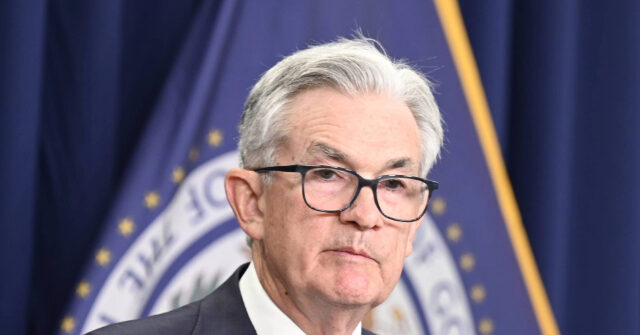In November, the Federal Reserve observed a slight uptick in its preferred measure of inflation, the Personal Consumption Expenditures (PCE) price index, which increased by 0.1 percent as reported by the Commerce Department. This figure was lower than the forecasts by economists, who had anticipated a 0.2 percent rise, hinting at a possible slowdown in the previously escalating inflation rates. Despite this month-over-month decrease, year-over-year inflation climbed from 2.3 percent in October to 2.4 percent, indicating a growing distance from the Fed’s 2 percent target. This persistent inflation creates ongoing challenges for the Federal Reserve as they attempt to navigate a complex economic landscape fraught with repercussions from their monetary policy decisions.
Following the release of inflation projections by Fed officials, expectations for future rate cuts were adjusted downward. The officials projected an inflation rate of 2.4 percent for 2024 and a slight increase to 2.5 percent in 2025, leading to a revised forecast of only two additional interest rate cuts in the coming year, a significant reduction from the previously anticipated four cuts. The core PCE index, which omits the more volatile food and energy prices, showed similar trends with a month-on-month rise of 0.1 percent and a year-over-year increase of 2.8 percent. This index’s steady growth since May raised concerns among officials that inflation had become entrenched, complicating their policy actions moving forward.
The release of the inflation data came just after the Federal Reserve conducted its final policy meeting of the year, wherein it announced an additional interest rate cut despite limited progress in managing inflation and a robust labor market. The Fed’s strategy is now under serious re-evaluation as officials express growing apprehension about the trajectory of inflation, contrasting with the more optimistic outlook they had earlier in the year. The dual challenge of navigating inflationary pressures while promoting economic growth is intensifying as the Fed tries to assess the impacts of its recent decisions on the economy.
This cautious shift from Fed officials has left investors, markets, and economic analysts on edge. Following the announcement of the latest interest rate cut, the stock market registered its sharpest decline in months. Pre-market trading indicators, including declines in the Dow Jones Industrial Average and the S&P 500, suggested that this unease lingered as market participants grappled with heightened uncertainty about the Fed’s approach to future monetary policy. Such volatility in the stock market reflects broader anxieties regarding the balance of sustaining economic recovery while managing inflationary trends.
Investors are currently bracing for a potentially lengthy gap before further rate cuts are implemented, with many betting that no adjustments will be made until at least spring. This cautious outlook emphasizes the Fed’s attempt to tread carefully in an economic landscape that remains unpredictable. The contrasting signals emanating from the central bank’s policies and recent economic indicators have led to intense scrutiny regarding the Fed’s ability to foster a stable economic environment while addressing rising inflation without exacerbating economic slowdowns.
In summary, the complexities of the current economic climate raise many questions about the Fed’s strategies moving forward. With inflation rates hovering above desired targets and recent volatility in financial markets, the trajectory of interest rates remains a crucial point of discussion. The delicate balance between fostering growth and curbing inflation must be carefully navigated as the Fed adapts to this evolving economic reality, aiming to instill confidence among market participants while addressing the ongoing pressures influencing consumer prices and overall economic activity.

